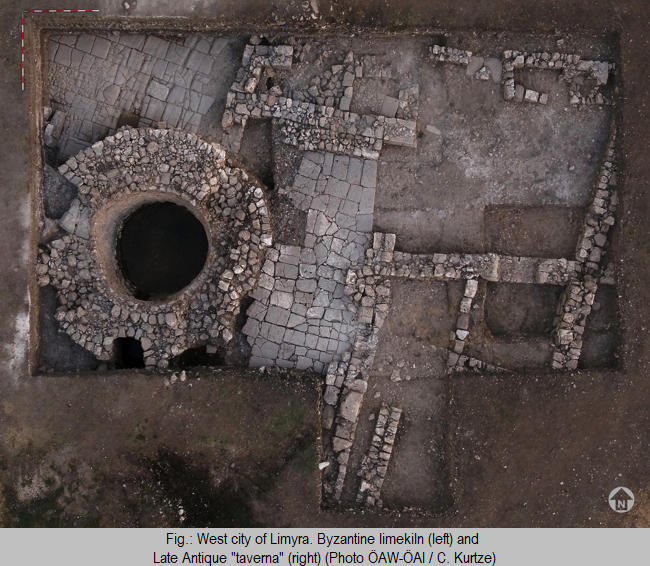The ancient city of Limyra is located on the southwestern coastal region of Asia Minor, nowadays Turkey, and five kilometers northeast to the modern town of Finike at the foot of the Toçak Dağı massif. It was a well-developed urban center of the Lycian region from the Classical until the Byzantine times.
The most recent campaigns in Limyra (2016–2019) extensively documented contexts and finds, indicating that the city was not abandoned during the so-called Byzantine “Dark Ages”, but even more, artisanal (producing and processing various materials) and building activities occurred. Furthermore, the transition from the Late Antique to the Byzantine period marked a change of priorities and a readaptation of the city features to immediate needs. Starting with the seventh century, artisanal activities related to massive construction investments developed in specific areas of the ancient city (Fig.). Kilns, ovens, slags and re-used architectural elements point towards a shift of the citizens’ interests and a stringent necessity for the refortification of the city walls.

The Persian raids between 602 and 628, the Arabic invasions through the naval battle of Masts in 654/5 (near Phonikous, 4km south of Limyra) and the great expedition against Constantinople in 672-677 (in 672 the Arab fleet apparently spent the winter in Lycia and Cilicia), set a troublesome background for the Lycian coast. The seventh century marks a reorganization of the ancient city of Limyra through adaptation, innovation and transition; the essential elements to make the difference between survival and disappearance.
![]() © Alexandra Dolea
© Alexandra Dolea
e-mail: alexandra.dolea@oeai.at
This article should be cited like this: A. Dolea, “Seek and destroy”. Reuse and recycle in Byzantine Limyra, Forum Archaeologiae 94/III/2020 (http://farch.net).